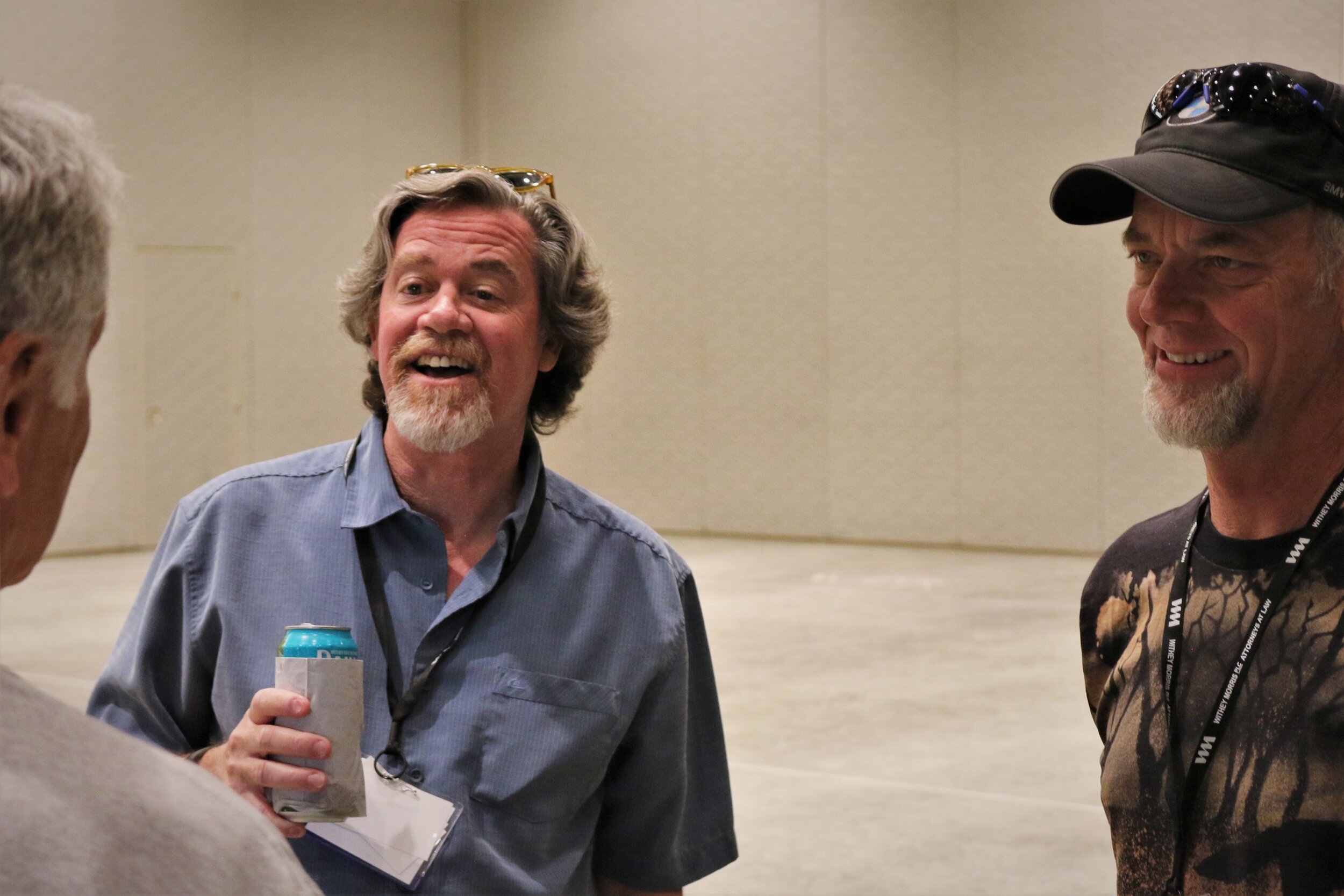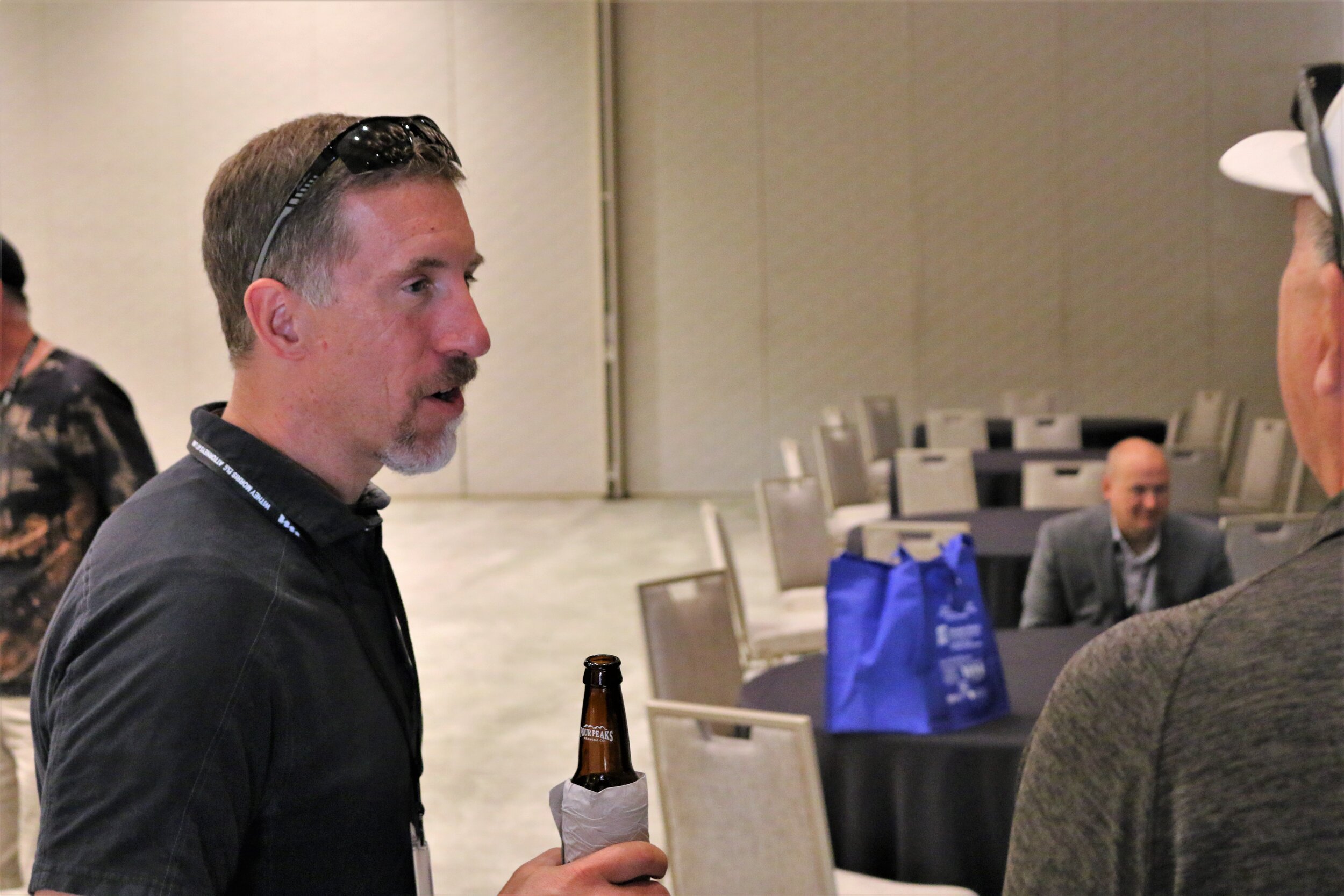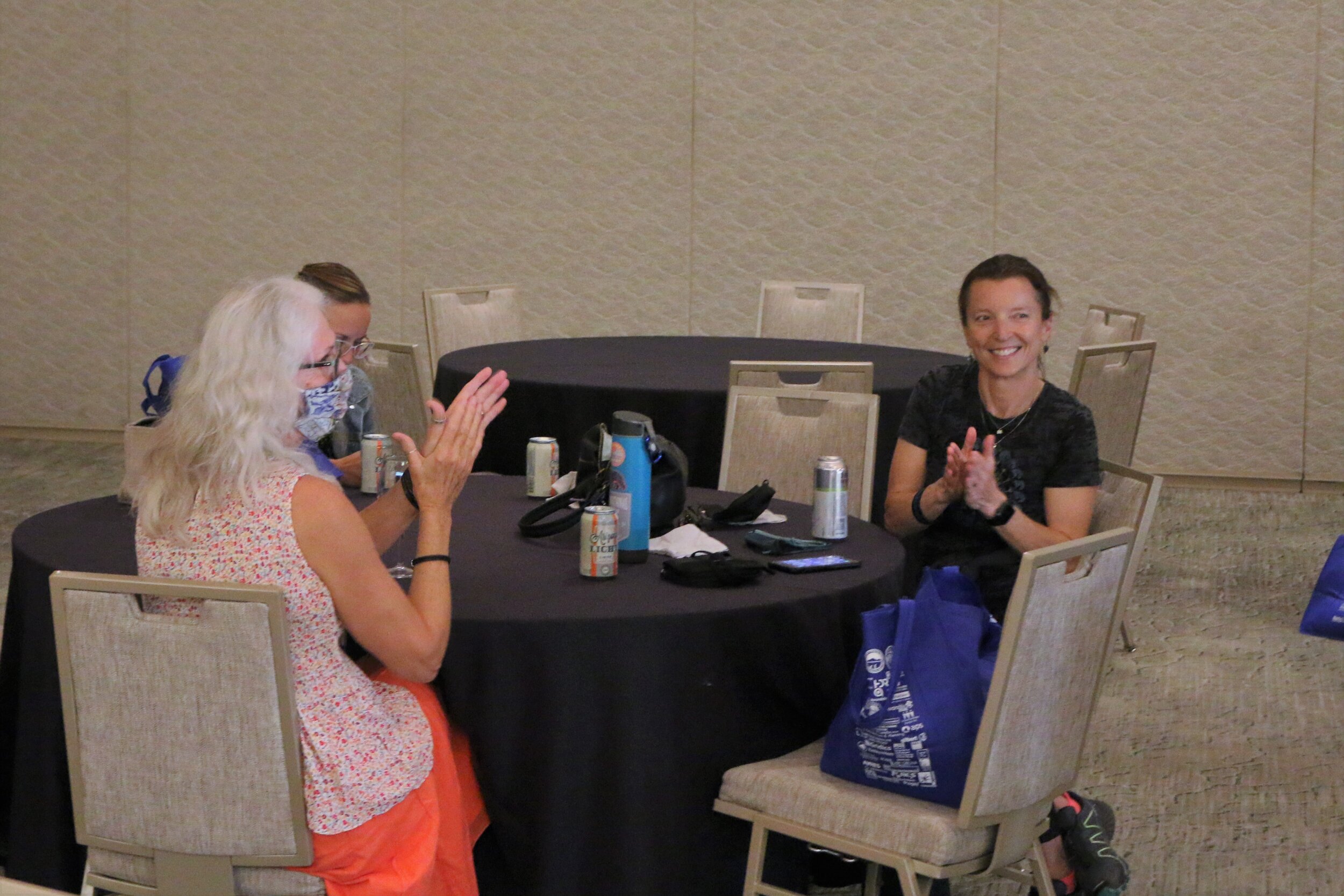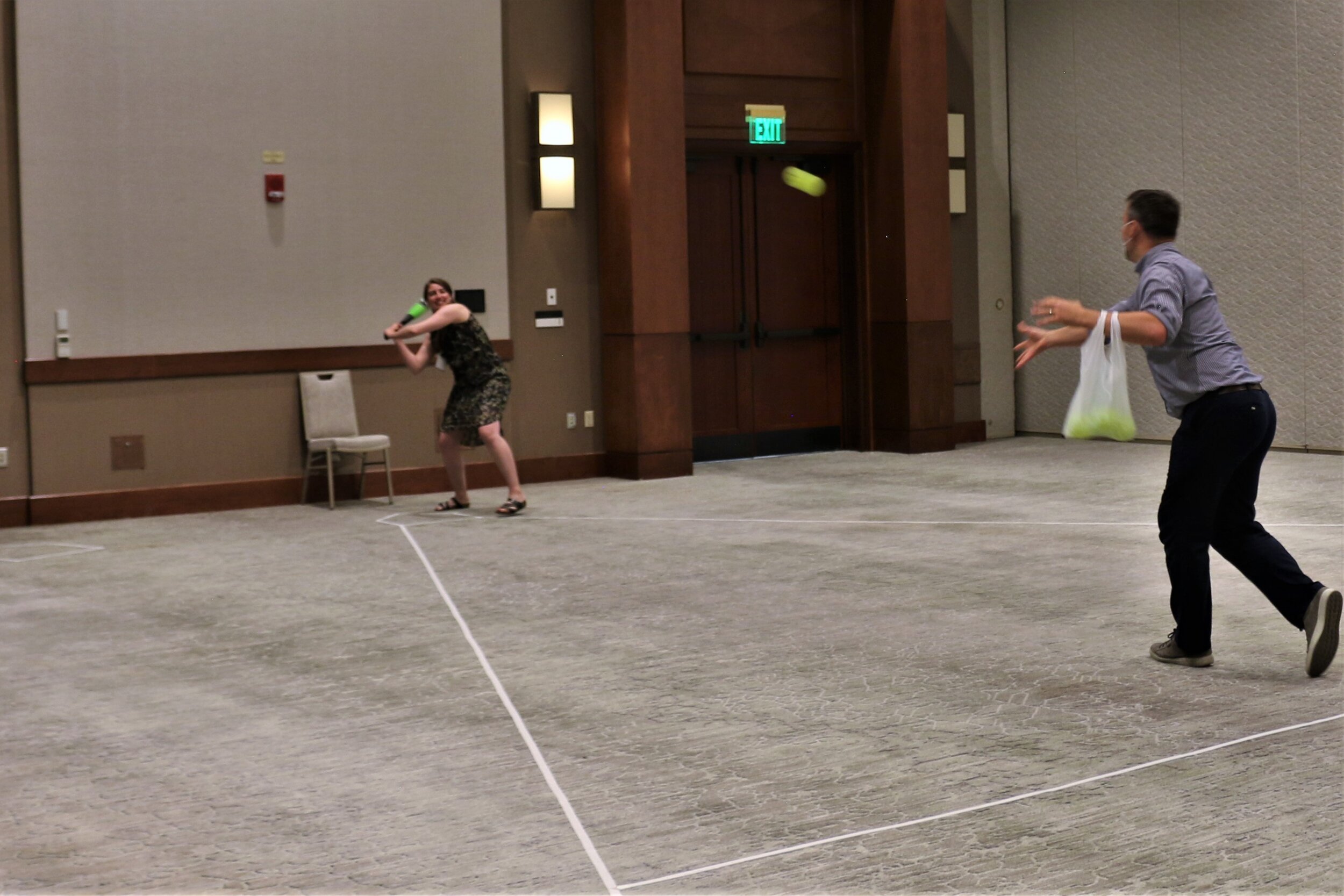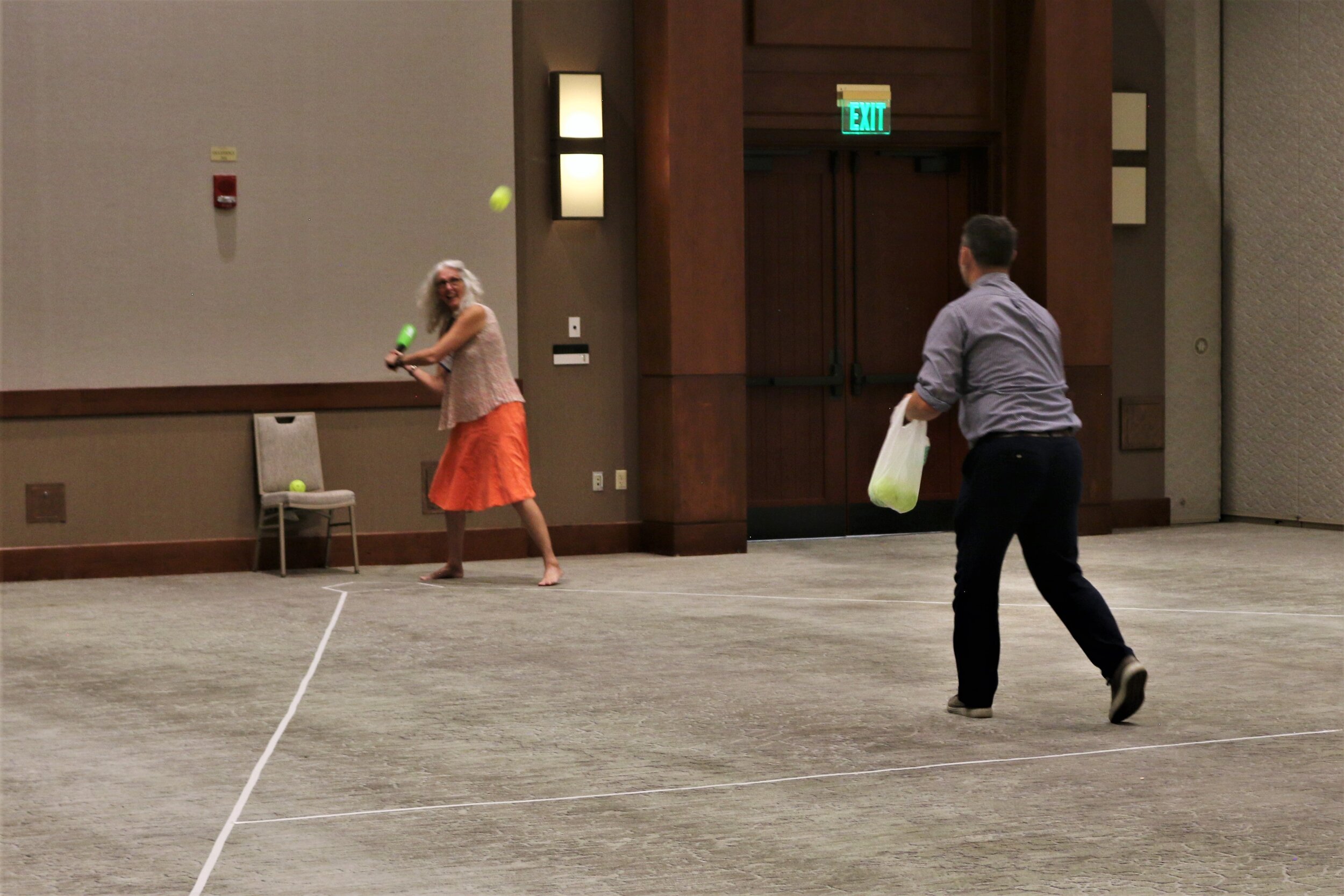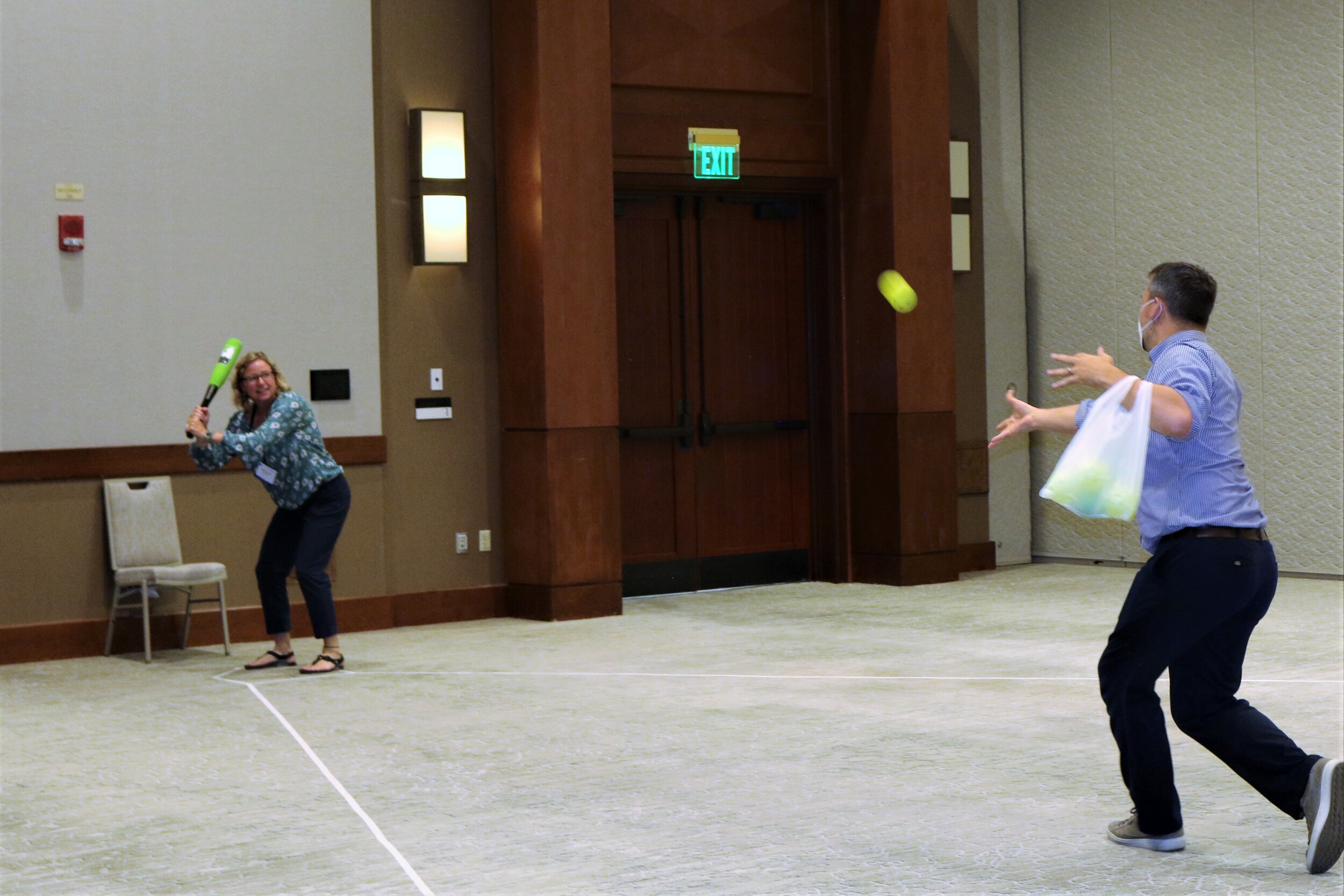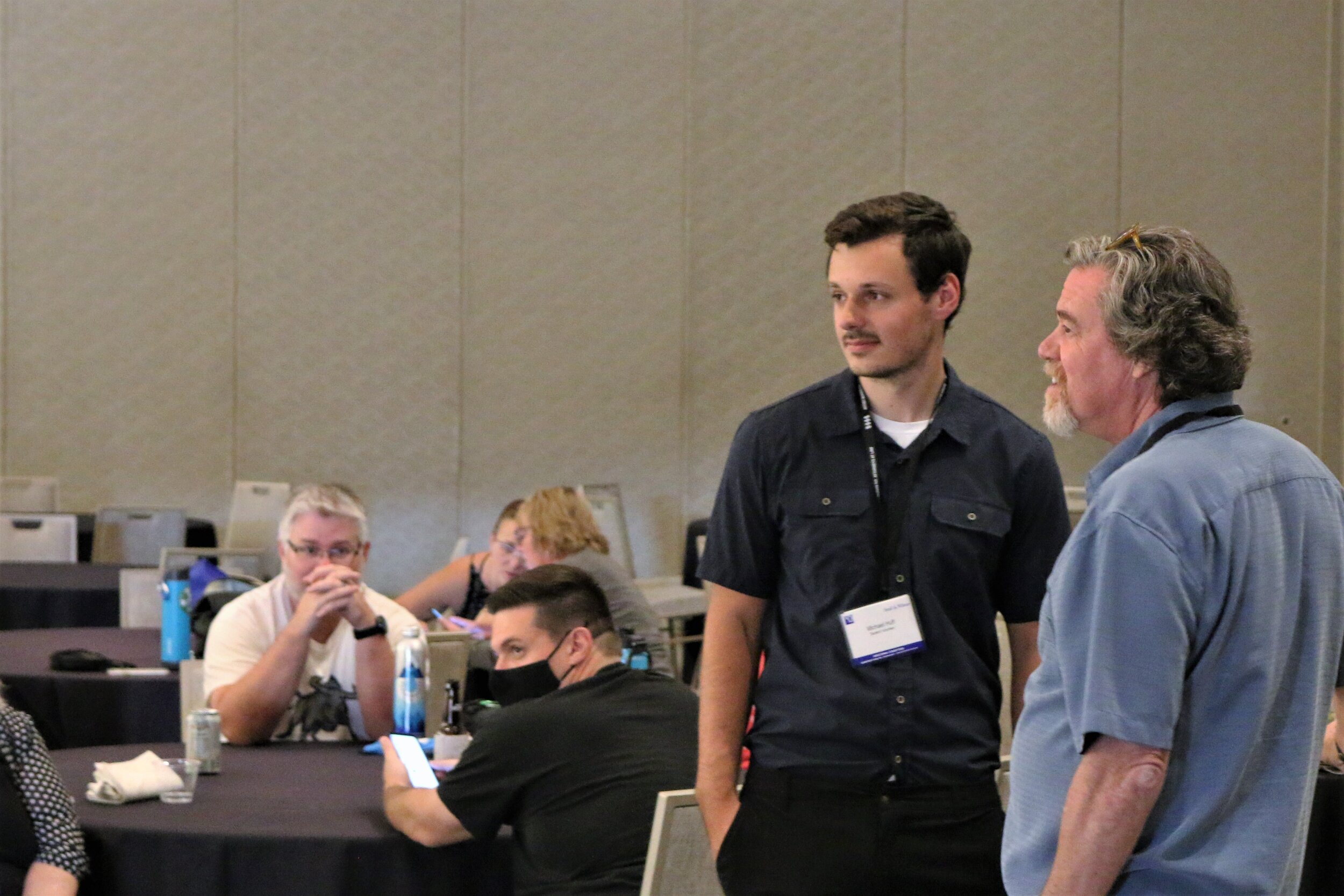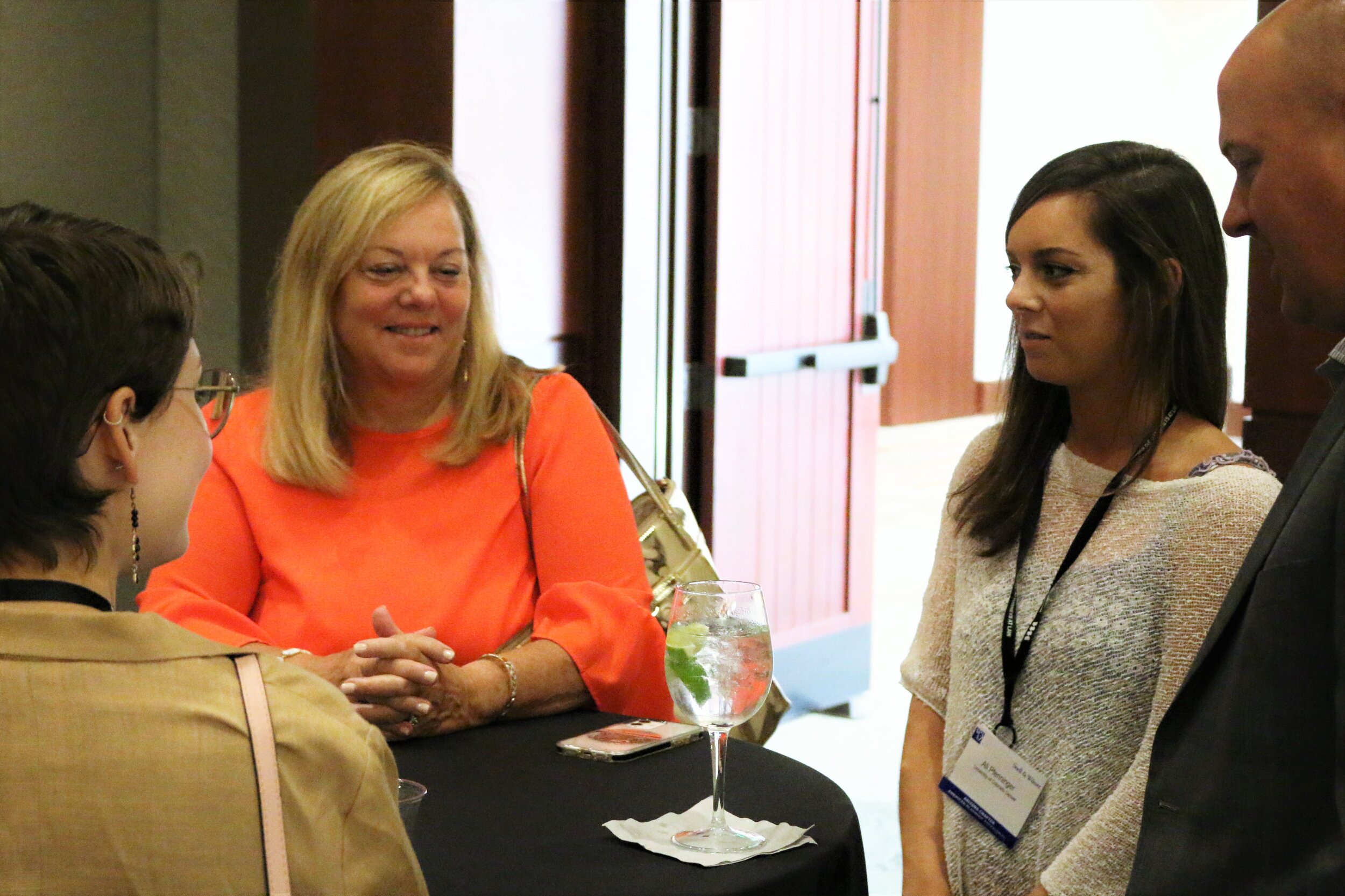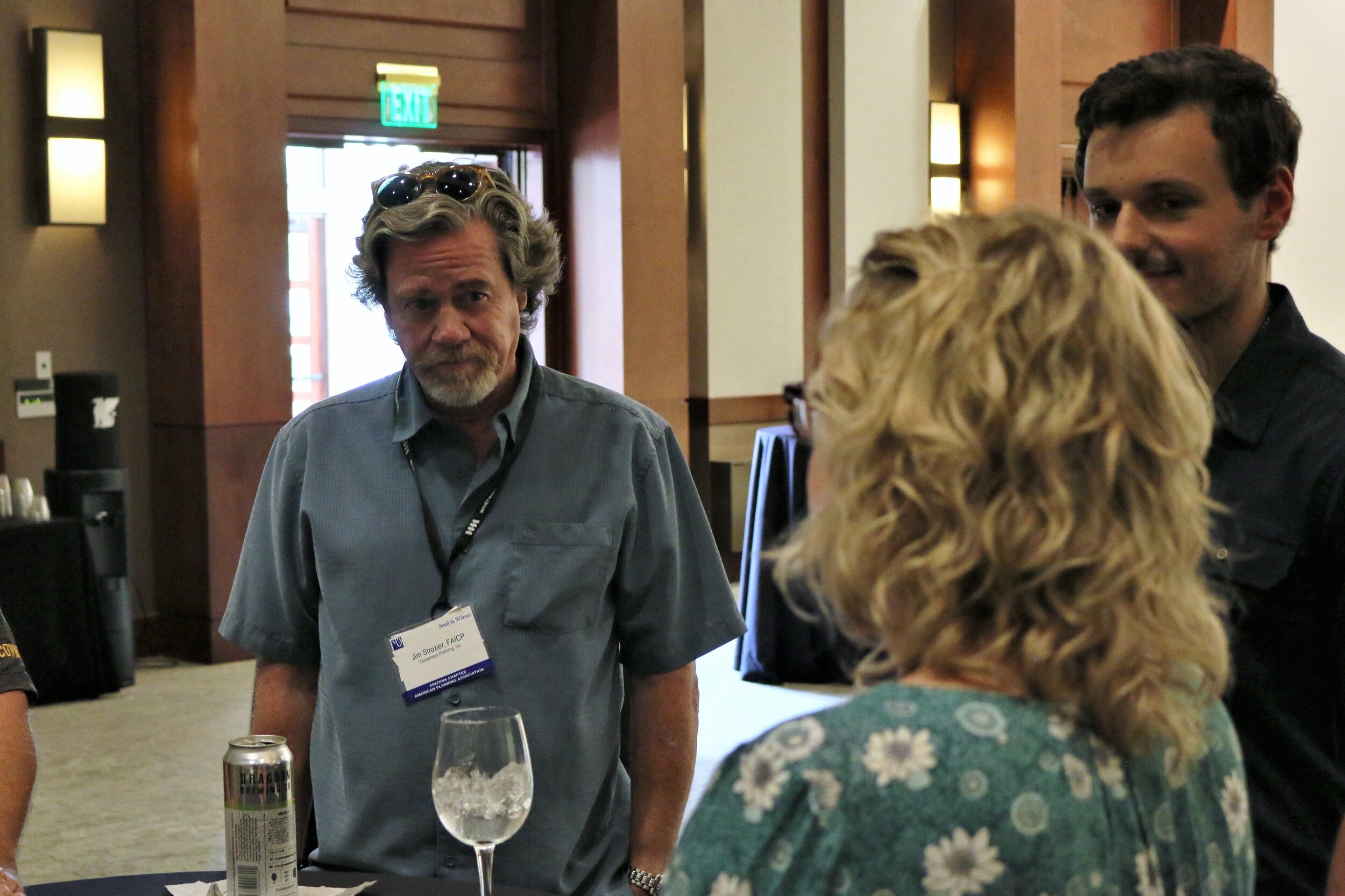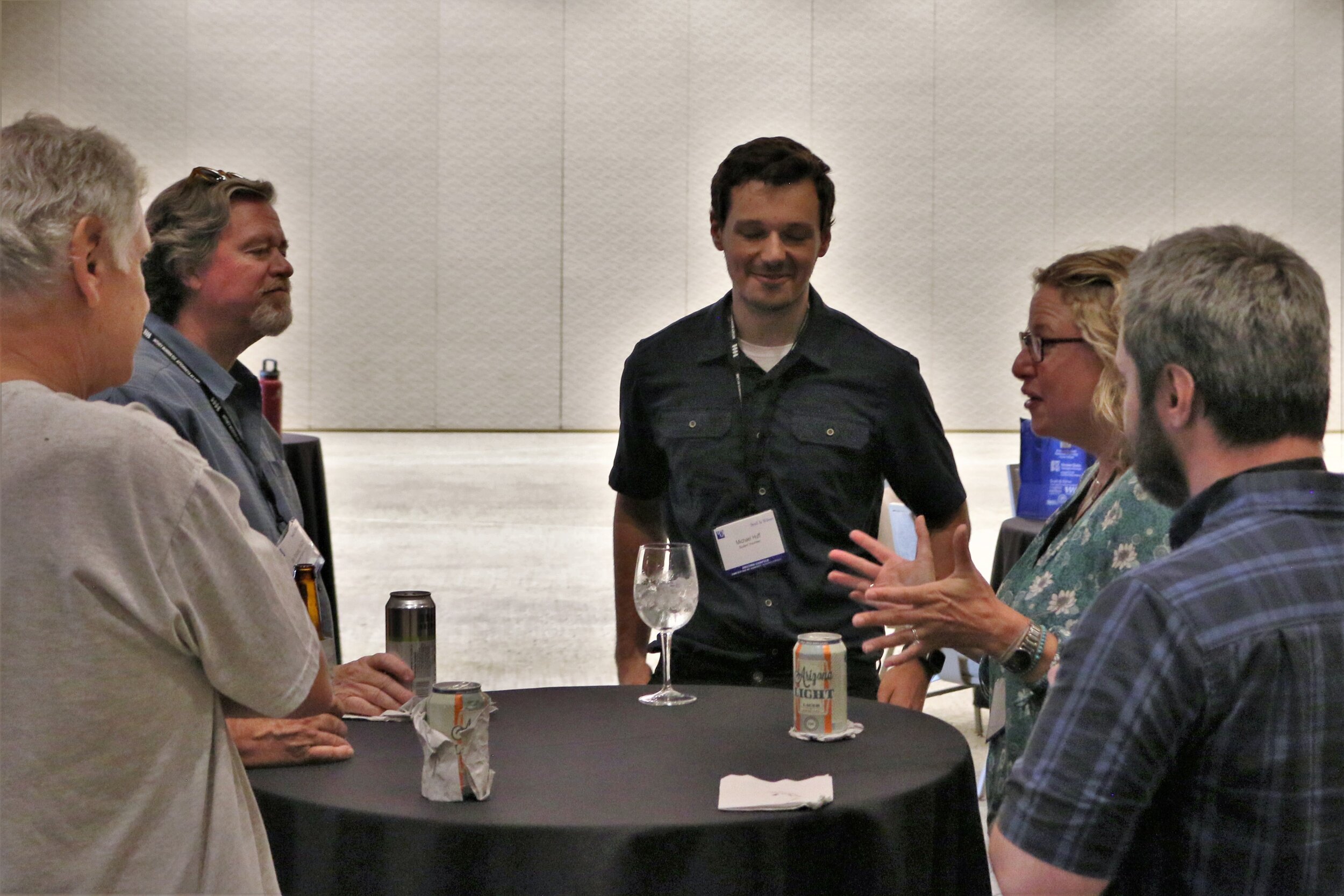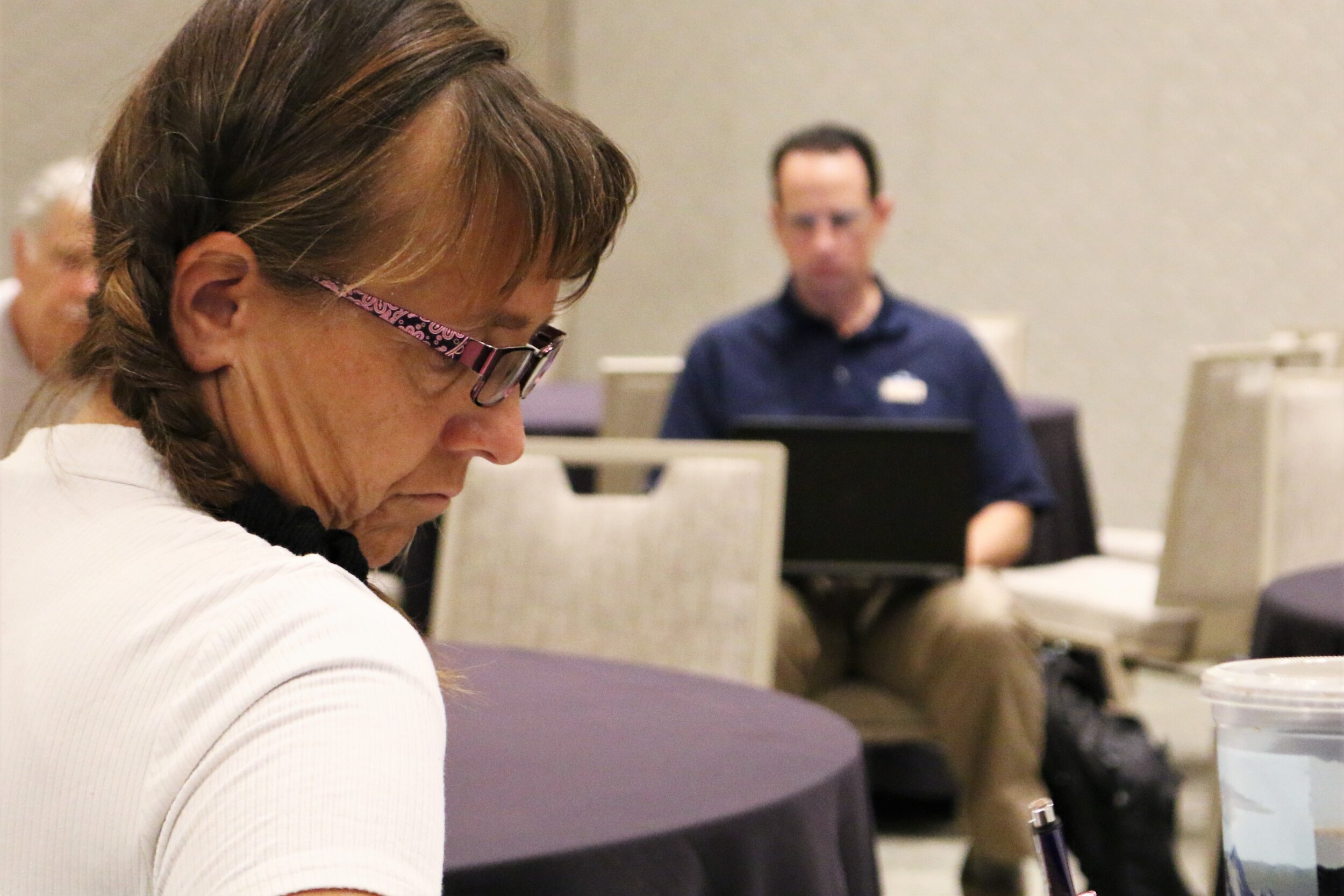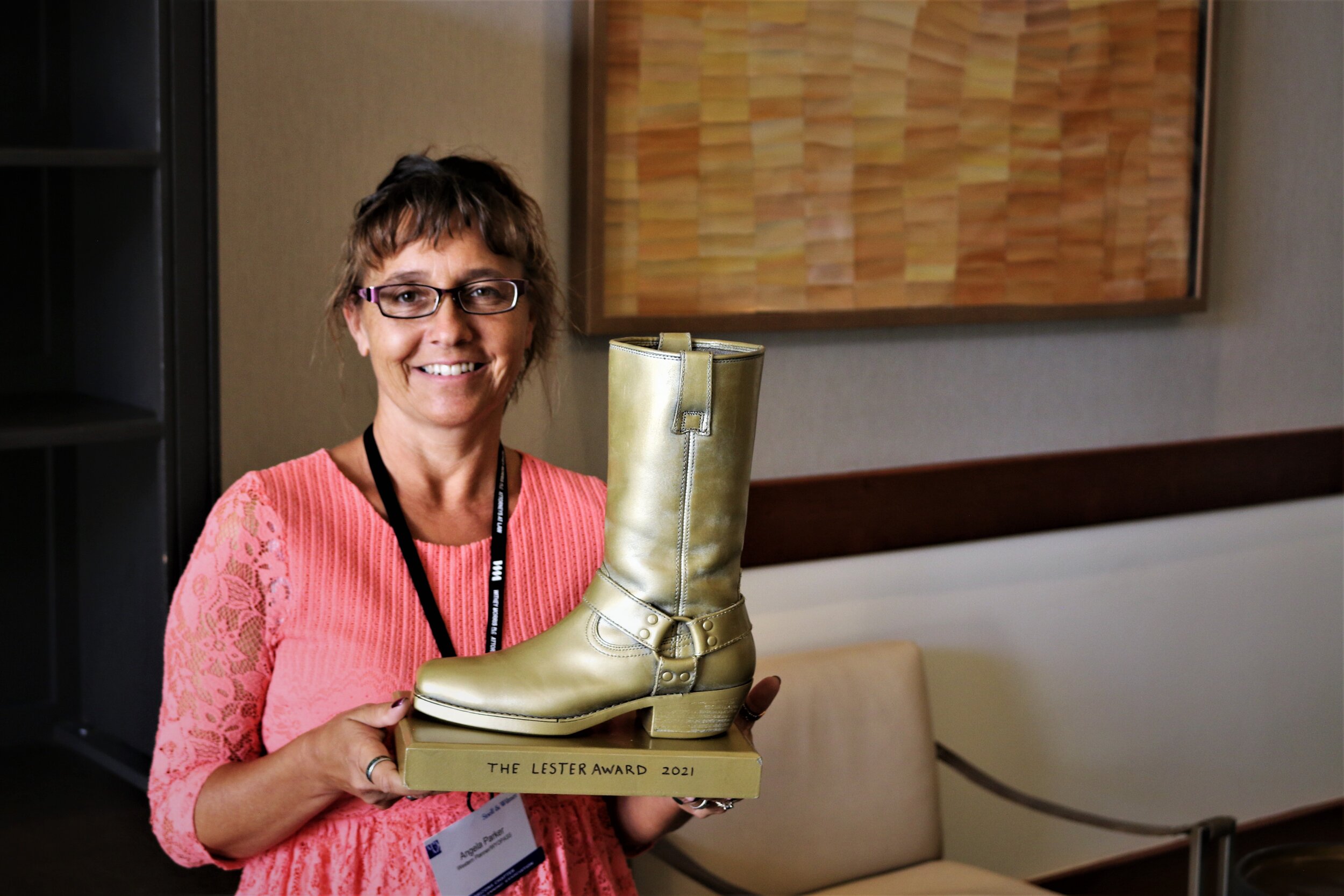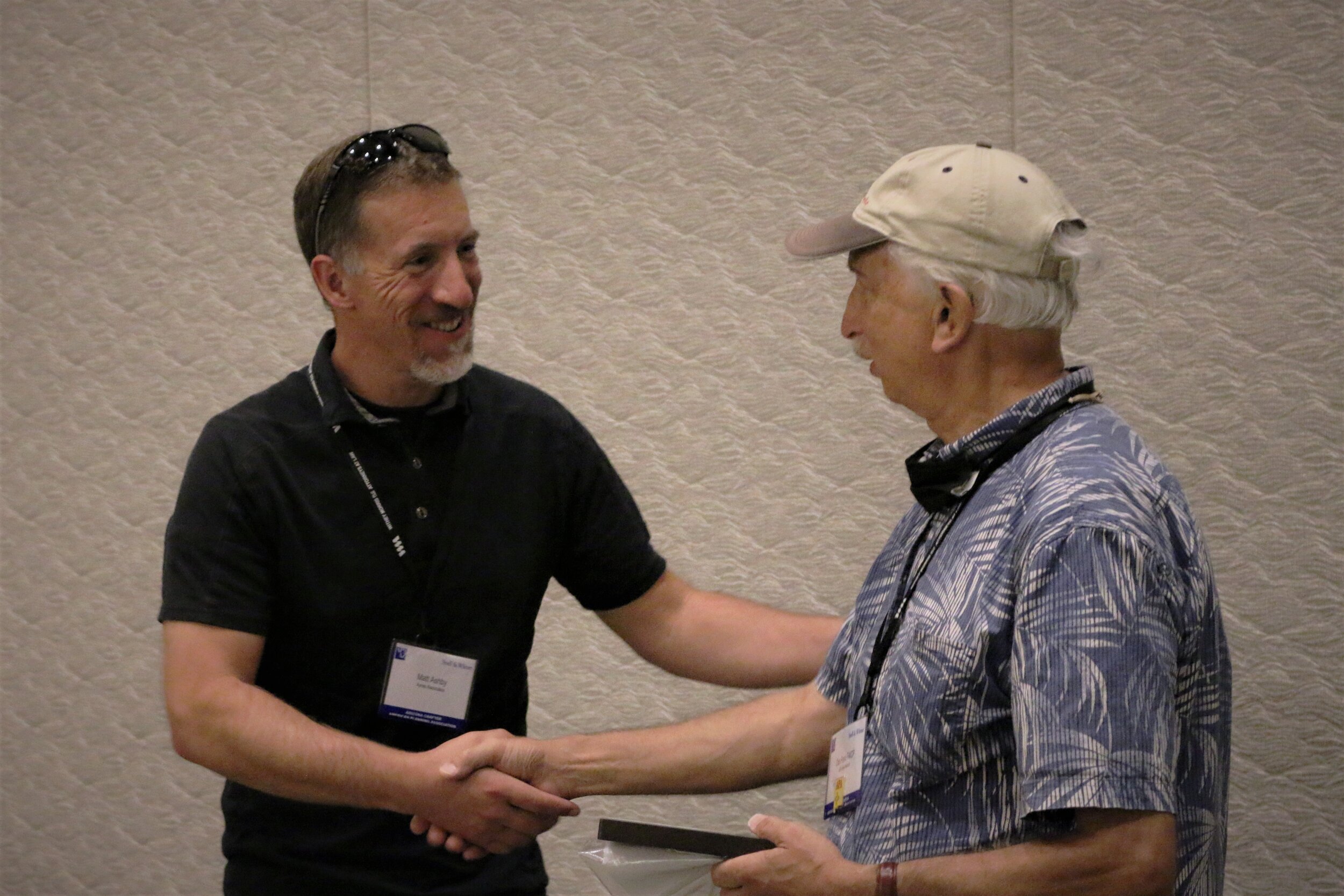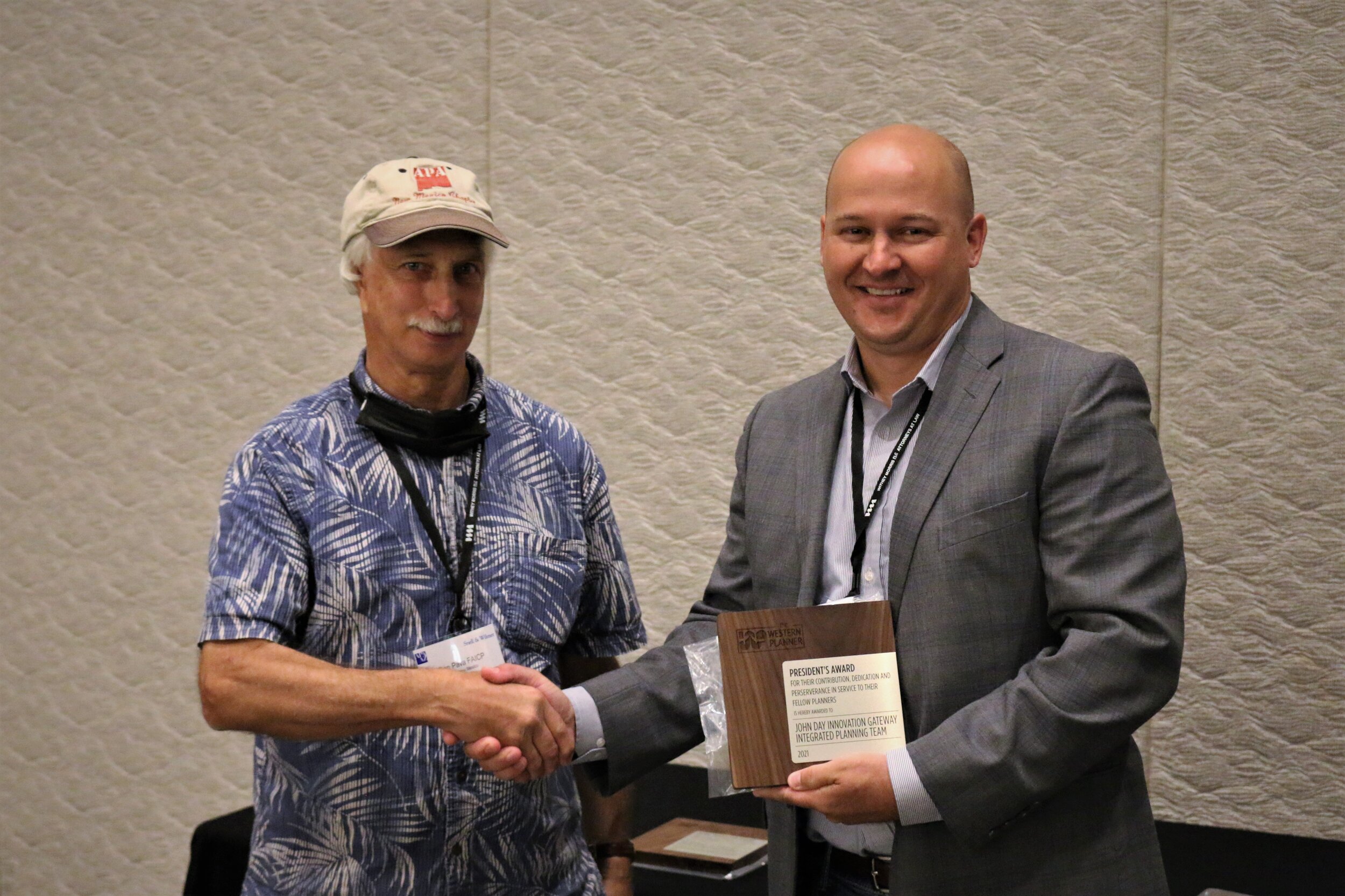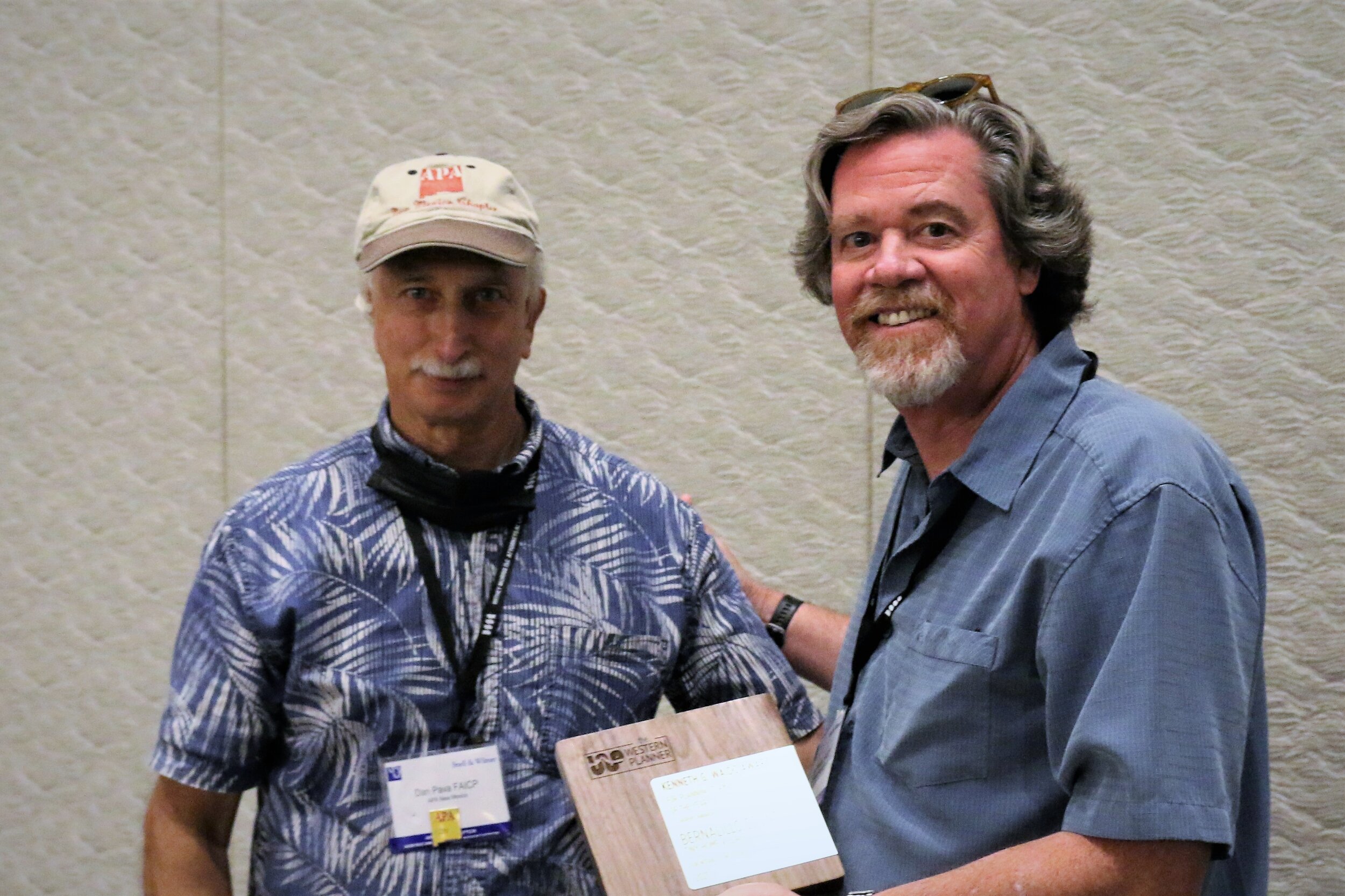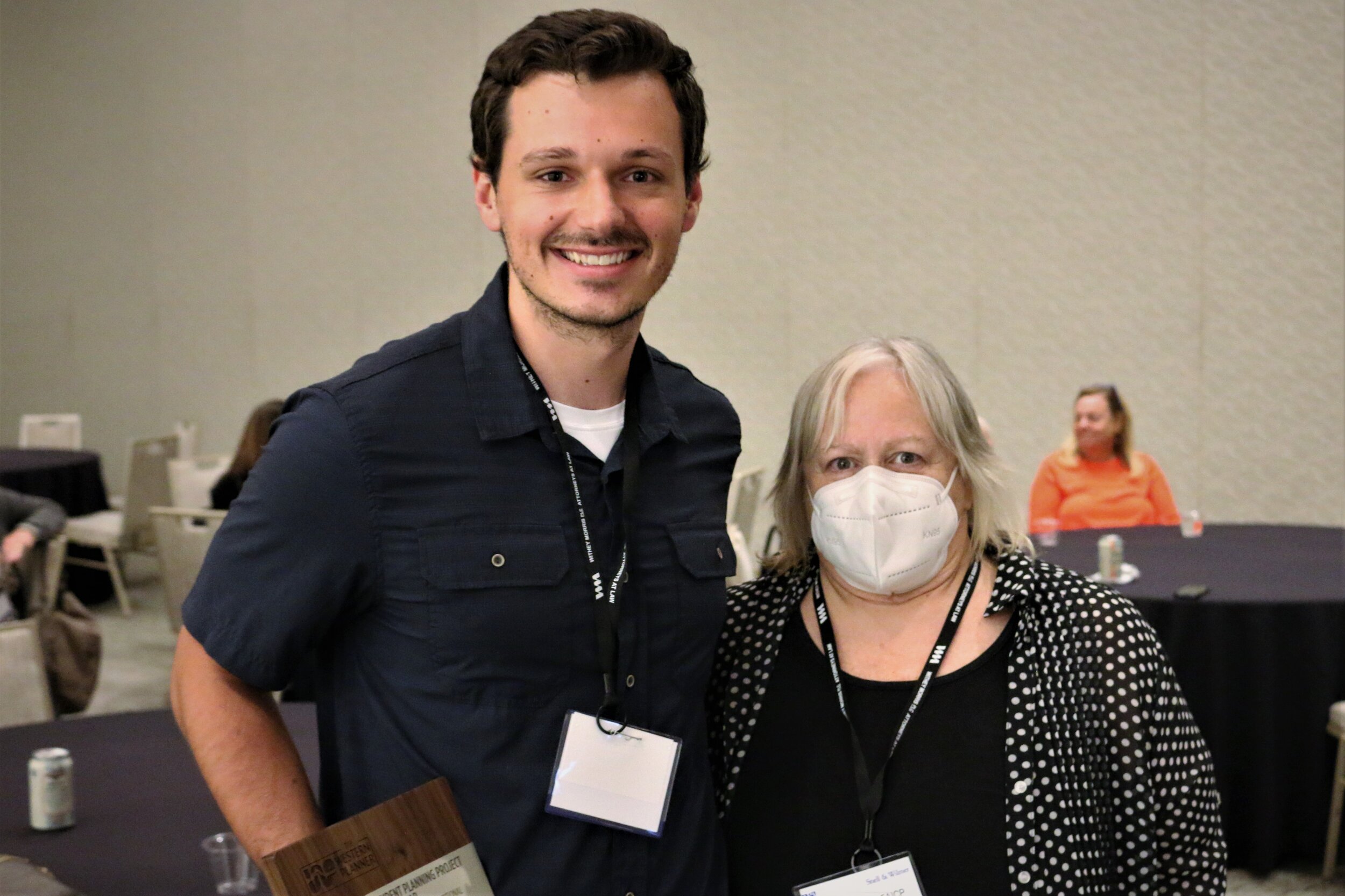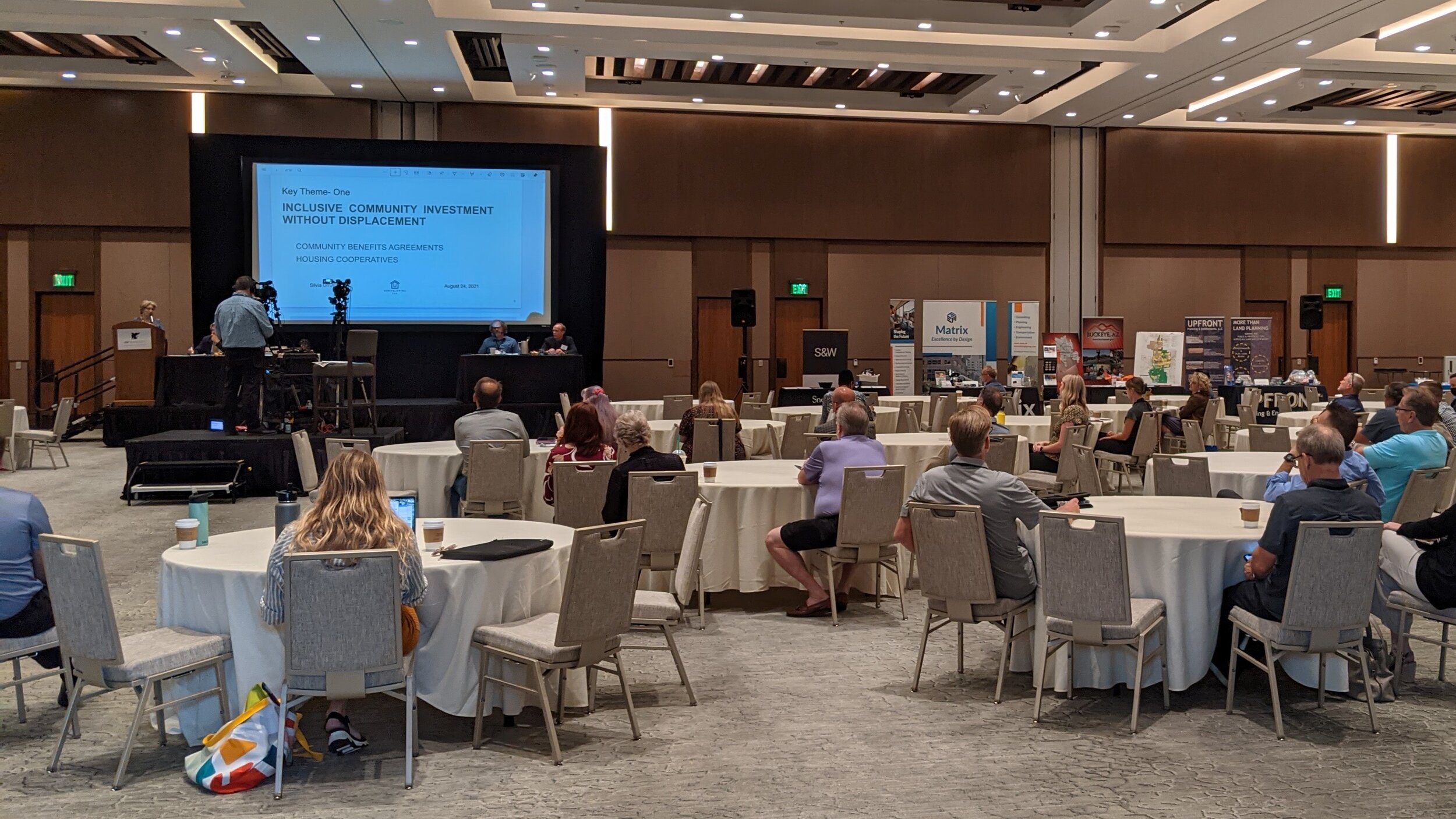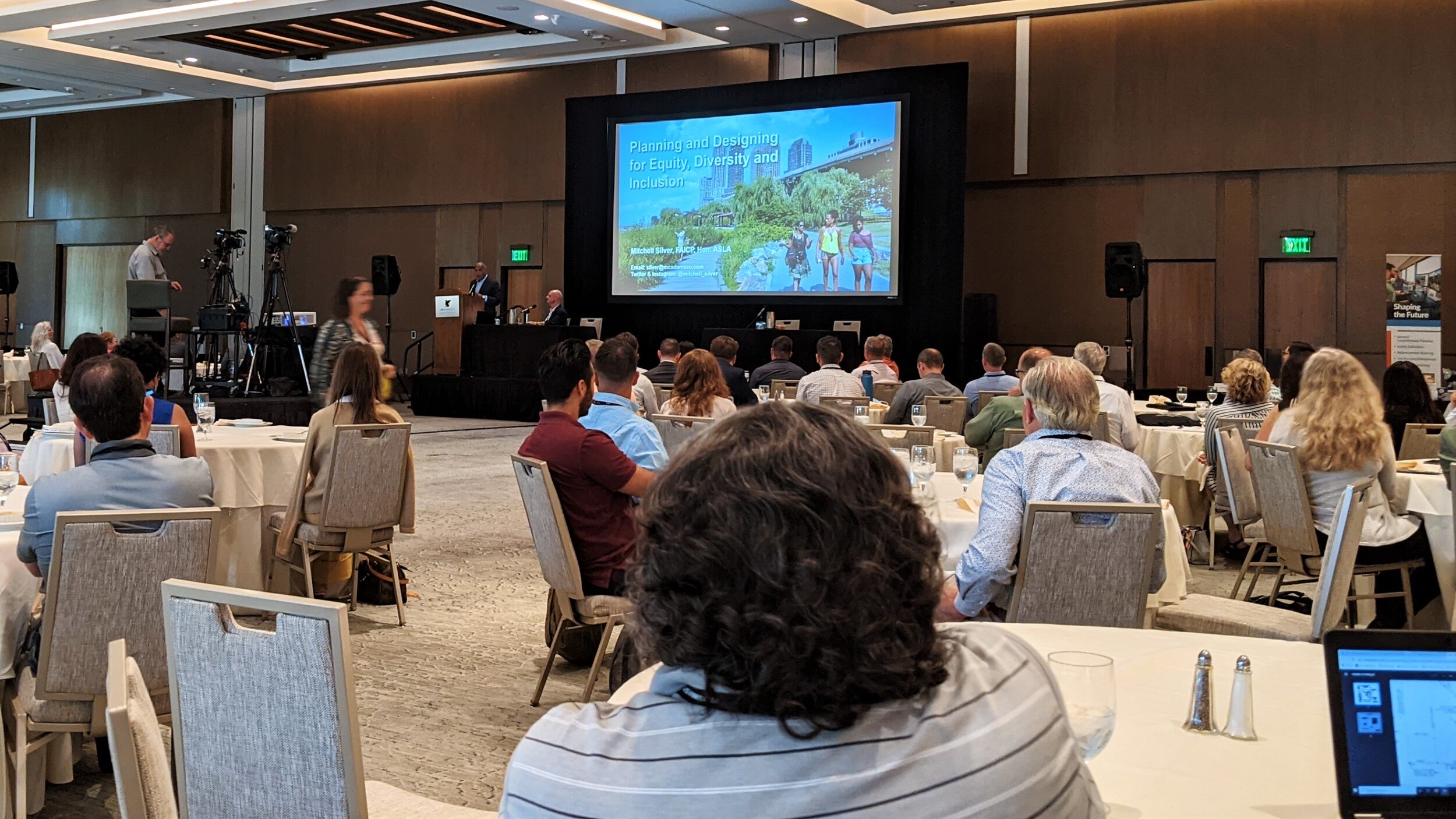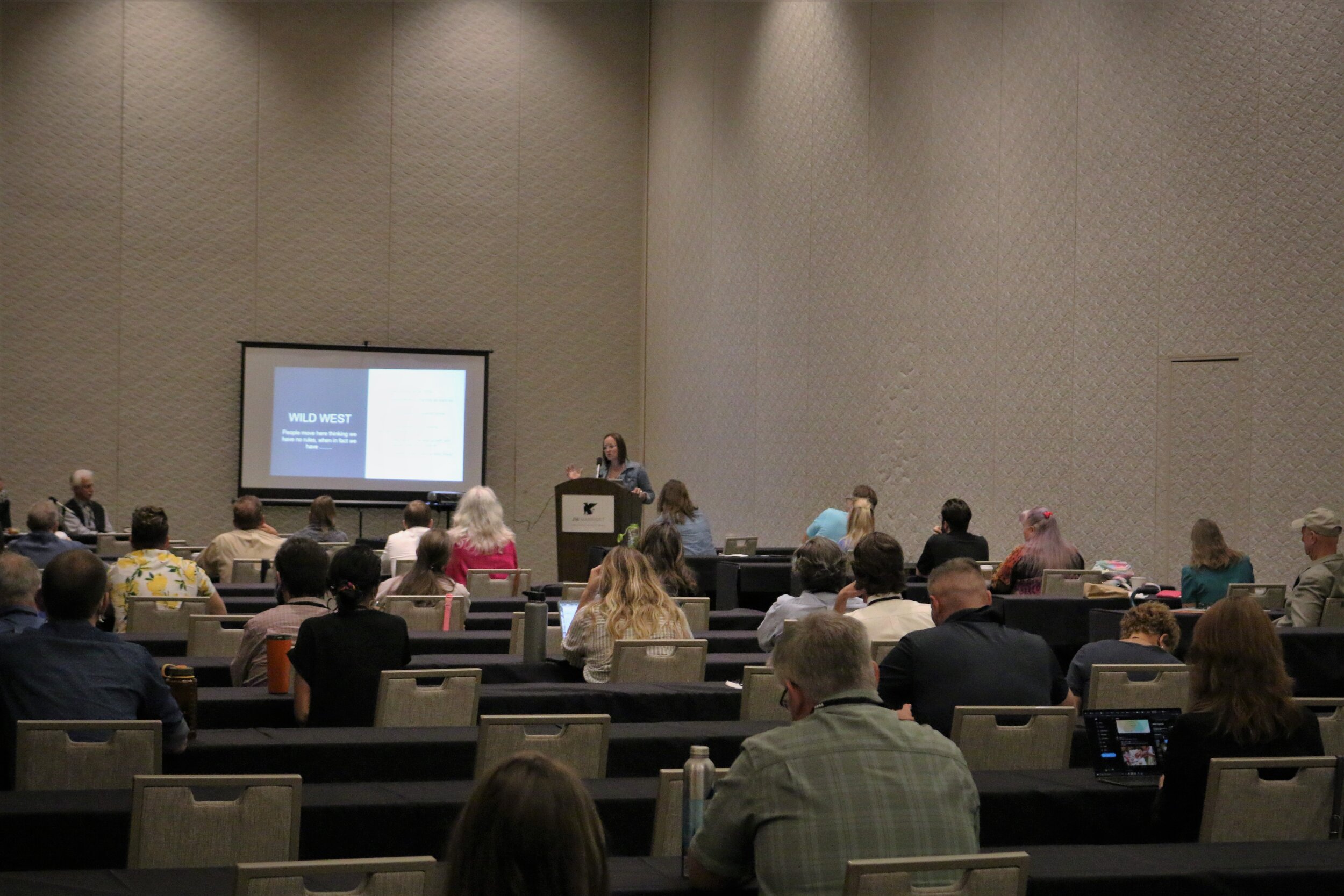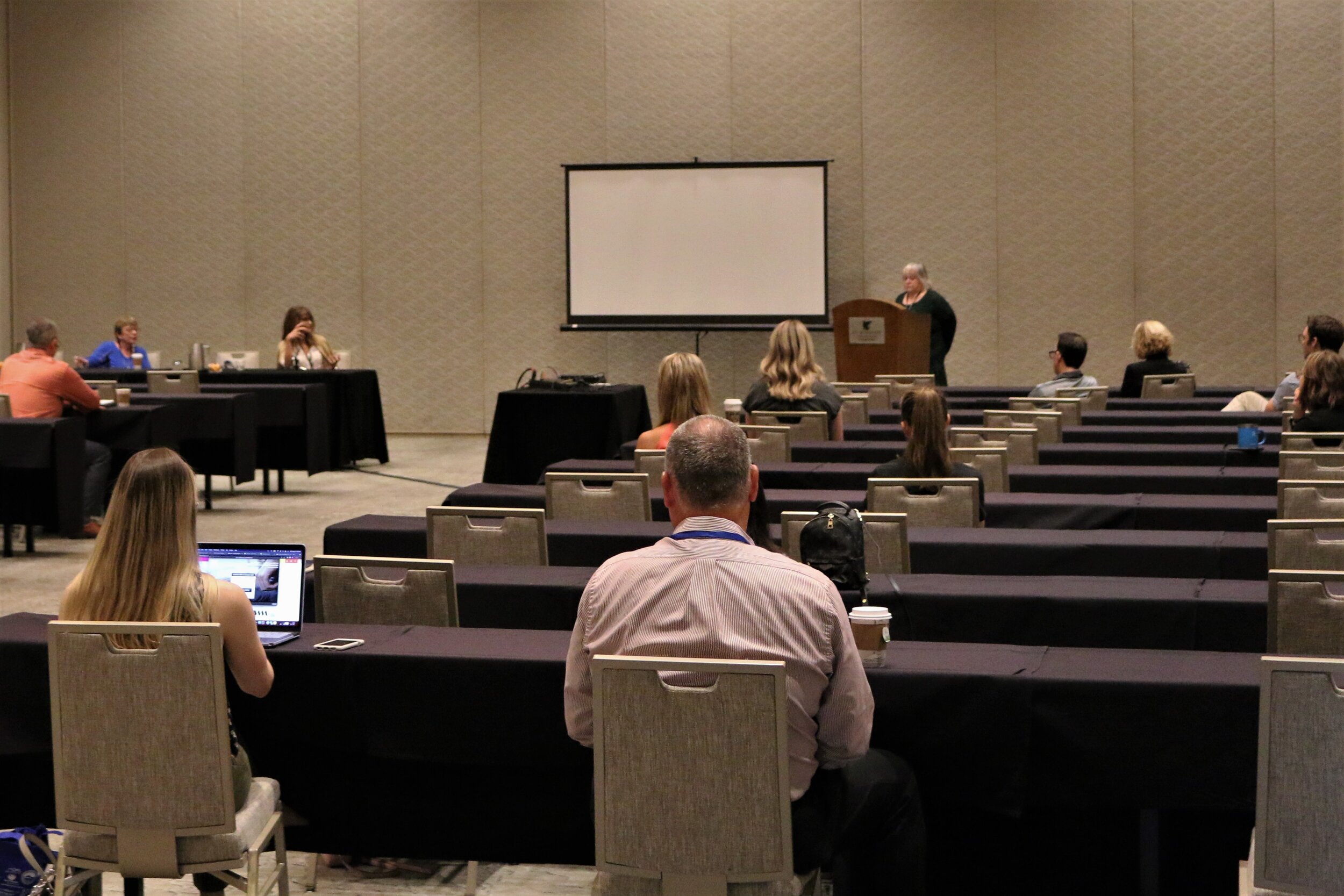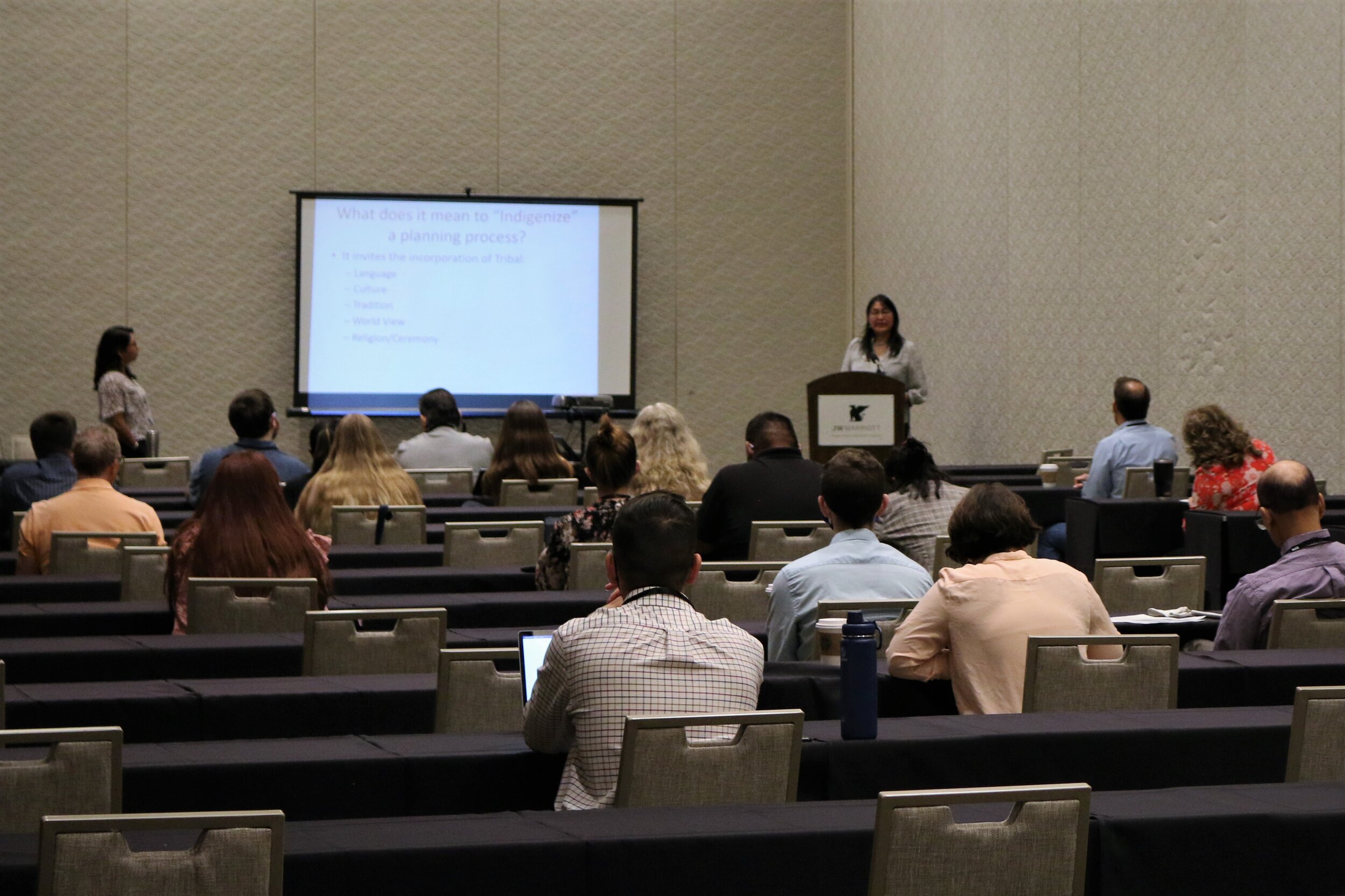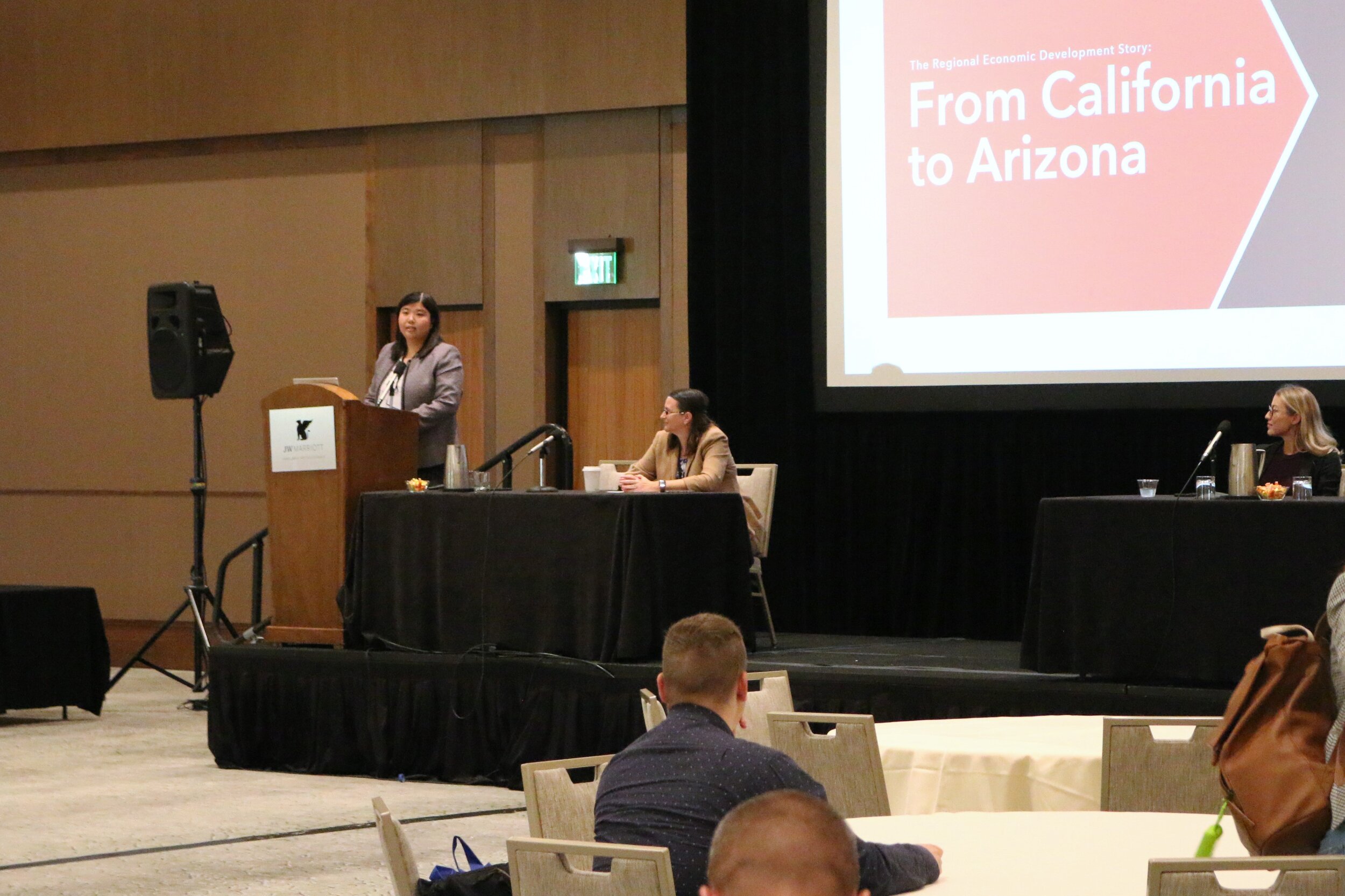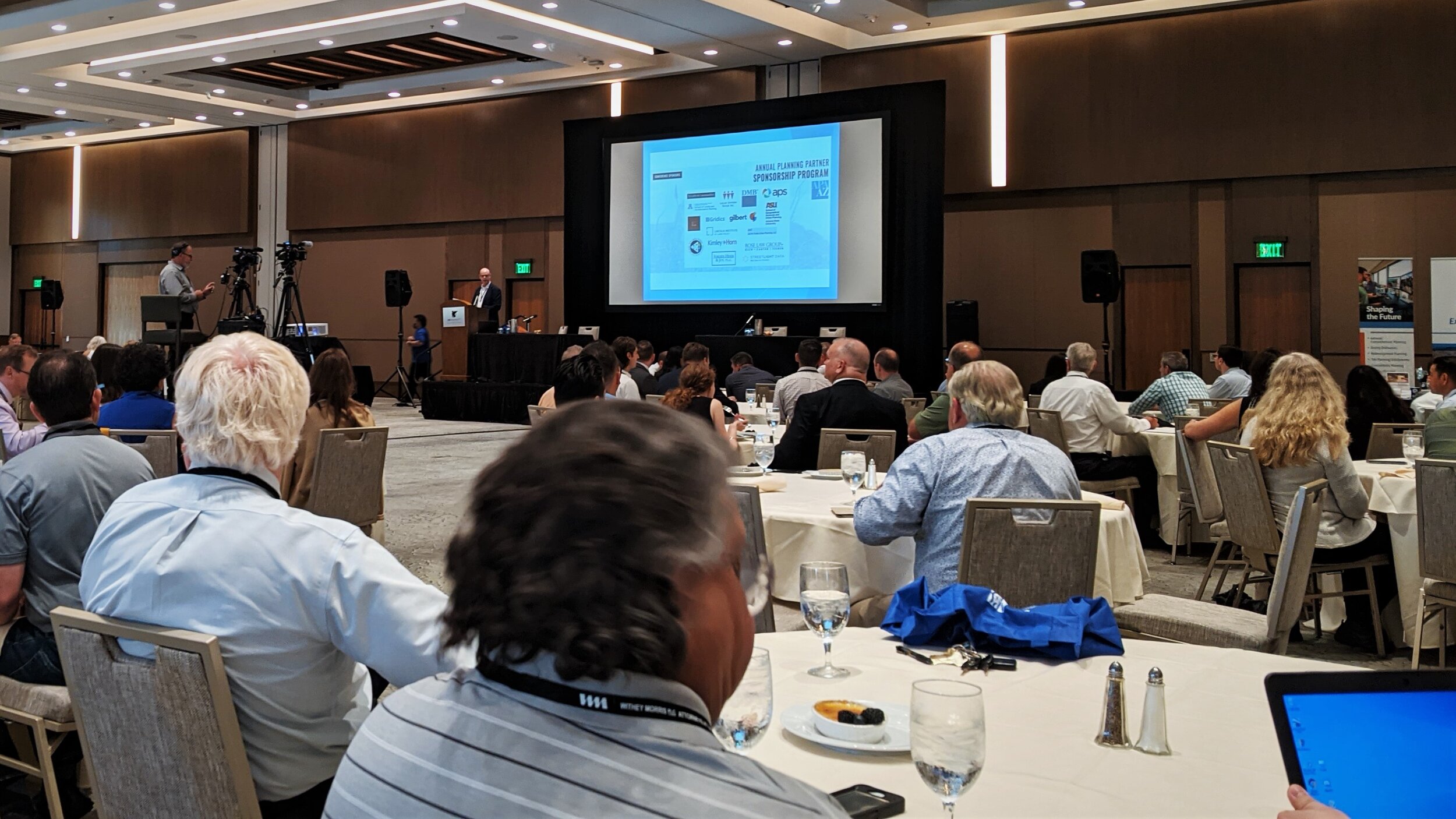Impressions from Breaking Boundaries, Creating Connections – Joint APA AZ and WPR Conference
by Dan Pava, FAICP
When we first began work on the recent Breaking Boundaries, Creating Connections conference—a joint APA Arizona and Western Planner Conference—in late 2019, there was no scenario that involved a world-wide pandemic. As our host committee continued to Zoom monthly through 2020, we began to consider options that would allow the conference to happen, including virtual sessions, renegotiating arrangements with the resort, and our thoughts and prayers. Invoking the planning gods, we took leaps of faith and pressed on. Lo and behold, the early summer of 2021 seemed to show promise. Places were reopening due to vaccinations under the retreating COVID shadow, and both of our boards were optimistic that the conference would be held mostly in-person; we would indeed break boundaries, reconnect, and create new connections.
According to APA Arizona, the final in-person registration count was around 325, and there were 70 virtual registrations. A little under thirty percent of the total registrations came from the Western Planner realm. The Camelback Resort, with its winding paths and manicured Sonoran Desert landscape, served as a serene retreat setting. The property got its start in the 1930s when Phoenix was miles away and home to maybe 50,000. It still retains some of this feeling since it is within Paradise Valley where gated single family ranchettes climb only partly up but do not dominate views of nearby Mummy and Camelback Mountains.
Living in Santa Fe, New Mexico, where we have seriously practiced COVID precautions gave me some pause to be here in person. I was pleased to see that the conference proceedings were held in a modern onsite convention hall with ample ventilation, open air plazas, and room layouts that accommodated social distancing while allowing interactions with fellow attendees. The conference issued a policy to all registrants that masks should be worn if unvaccinated, and my impression was that this was followed, as you would expect from planners! I also suspect many vaccinated wore masks as well.
Prior to the conference, on Sunday, I participated in our day-long WPR Board meeting, ably chaired by our now-Lester Award-winning president Angela Parker. I’m certain she will fill you in on our organizational progress and challenges, so I will just let you know how impressed I am with the dedication and vision of this volunteer board, and our exceptional editor and all-around manager, Paul Moberly. The one point I want to make is one I have made before: There is great value in being part of a network that transcends formal connections and results in friendships borne of shared experiences, celebrating building better communities. Western Planner is your network, and our online journal and conferences are meant to be by, for, of and about planning outside the mainstream flow into the tributaries of our rural and small-town communities and tribal lands.
The 2021 Western Planner Awards were bestowed that Sunday evening accompanied by an innovative version of the Wyoming vs the World Softball Game. The awards are covered elsewhere, and I’m certain that you will marvel at the ingenuity demonstrated in photos of the game, which was played indoors with a wiffle ball. Evidently, there actually are rules for Wiffle Ball, but Wyoming still won.
This conference afforded five concurrent tracks with another 15 panels and both lunch keynote speakers being made for virtual viewing later. You could attend sessions in person and attend others online later as a full registrant. I believe this hybrid model will be duplicated in the future as it enhances learning and leverages efforts. Being retired and a life-time APA member means that I do not need to garner AICP credits, but this hardly precluded my sampling of offerings. It seemed that most sessions were full even with greater seat spacing. It was fulfilling and pleasing to see everyone so engaged and attentive despite the COVID restrictions.
I opted to start out with “Indigenizing the Planning Process” which explained the similarities and notable differences in planning for tribes illustrated with examples of culturally appropriate methods and outcomes. I then sat in on “New Mexico’s Response to Changing Climate” to hear what New Mexico State Land Commissioner Stephanie Garcia Richard had to say about greenhouse gas- reducing initiatives happening on the state’s 13 million acres of trust lands. Later, the Commissioner spoke on my panel “Wilderness or Wildness” along with my colleagues Amber Vogt and Mark Apel. AICP President Mitch Silver addressed the Monday lunch plenary asking, “How do you plan for equity, diversity and inclusion?” He shared examples of game-changing urban open space designs from his seven-year tenure as New York City’s Parks Commissioner. To further satisfy my thirst for knowledge about our southwestern drought, I headed over to the panel “Colorado River Shortages and Urban Impacts.” The flow of current information came rapidly with fact-based scenarios.
Later, at the opening reception, held at the OdySea Aquarium, we were treated to good food and libations set against tanks of exotic aquatics. It should be noted that no sushi or fish was served at this networking event. Early Tuesday morning at sunrise I joined several planners for a walking tour of Paradise (Valley, that is). We covered about three miles on the sidewalks of this Phoenix suburb, and Arizona's wealthiest municipality. We strode past luxury golf courses, Barry Goldwater’s statue, old ranchettes and newer McMansions, and omnipresent Oleander hedges whilst learning about code enforcement among the rich and famous. Upon our return the mercury had started to climb, and I went back to my casita to prepare for my above-mentioned panel. After listening to Professor Margo Hill provide a tribal perspective about planning at the lunchtime plenary, I was ready for another outing. Fortunately, my colleague Jim Strozier had given me his ticket to the Arizona wine economy workshop that included a trip to former APA Arizona president Peggy Fiandaca’s LDV winery tasting room in Scottsdale. I think Jim was just trying to keep me from heckling him during his panel which was happening at the same time. By the way, Arizona is up and coming on the wine scene which is mostly around Wilcox, Patagonia, and Verde Valley. Tuesday evening featured the Planner’s Bazaar which included dinner and raffle prizes from the conference’s very generous sponsors. It was a full day, and yet there were still more activities to be had with a Better Cities Film festival and painting party. But yours truly sauntered off to his casita in the desert night.
Wednesday beckoned with the lure of Mimosas from the sign law panel, but I chose to meander and schmooze before participating as part of a closing panel on mentoring. I shared how I have benefitted by being mentored during my career, and being a mentor as well. This was a pleasant way to wrap up a conference held in Paradise, understanding that when location and intention merge, the results can break boundaries, create connections, and be contagious (in a good way). See you—in person, I hope—at our next Western Planner conference in Bismarck!


